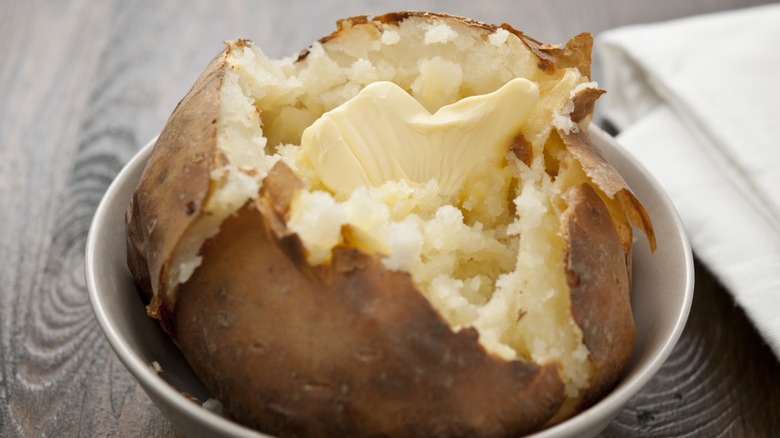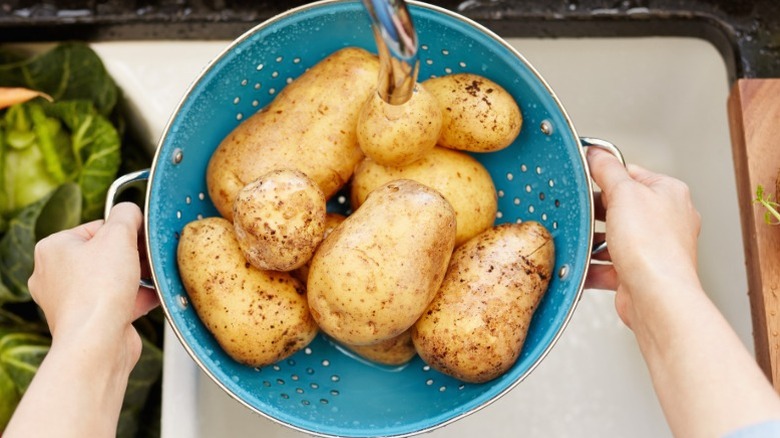Ditch The Foil And Say Goodbye To Soggy Baked Potatoes
No one likes a soggy spud. But when it comes to baking potatoes, it can be an unfortunately common outcome. The Takeout asked David Acosta, culinary and restaurant consultant and co-founder of ARBO Marketing, about the issue, and he says the problem stems from wrapping potatoes in aluminum foil. Since a potato's composition is about 80% water, the foil inhibits that crunchy exterior everyone loves. "Foil traps steam, which keeps the skin soft and kinda rubbery, while the inside turns out denser and a little watery," Acosta explains. "It's handy if you're rushing or need to cook a bunch at once, but you'll miss out on the crispy, salty skin."
There's a simple solution for making the perfect baked potato at home: Scrap the shiny silver paper entirely. "Without foil, the skin gets crackly and golden thanks to the dry oven heat, and the inside stays fluffy and light — way better for piling on butter, sour cream, or whatever you're into," Acosta says. With this method, you'll always end up with a restaurant-quality baked potato.
How to cook a baked potato
Before baking, it's important to select the right type of potato. "For the fluffiest results, start with russet potatoes," David Acosta advises. Compared to waxy potatoes like reds, whites, and golds, russets have thicker skin and a lower moisture content, both of which keep them light and fluffy. Give your spuds a good rinse and scrub them well to remove any dirt, then allow them to dry completely before poking a few holes into the skin with a fork. The holes act as little steam vents all over the potatoes.
Next, add a little flavor. "Rub the skins with olive oil and a generous sprinkle of coarse salt — this makes the skin crisp up nicely and adds flavor," Acosta says. "If you want to level up, rub the skins with garlic powder or rosemary before baking." Then pop them in the oven at 400 to 425 degrees Fahrenheit for 60 minutes — but skip the pan and instead toss them straight on the rack. "The hot air circulates better this way," Acosta says. "The dry heat of the oven pulls moisture out of the potato, which is why the inside gets so light and airy, while the oil and salt work magic on the skin," he adds.
As soon as the russets are out of the oven, it's time to cut them. "Split them open, fluff the insides with a fork, and add a pat of cold butter (it melts into all the nooks)," Acosta says. Then you're ready to pile on the toppings.

